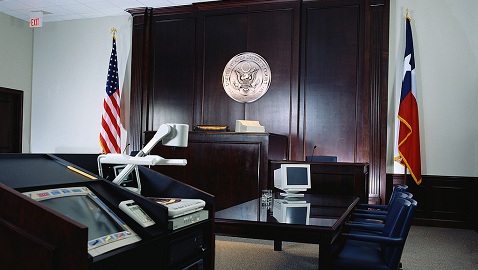Both Employer and Fired Worker Cite Employee Manual to Make Arguments in Court
Post Views 2A man working at the Los Alamos National Laboratory in New Mexico was terminated only three weeks after he was hired. He filed a lawsuit and tried to support his argument in court by pointing to the laboratory’s Administrative Manual – the same one used to show that his employers had the right to fire him in the first place.
The man was hired by the laboratory for a position in its Fire Protection Group. He was sent a letter explaining that he would be a probationary employee for one year and that he was to comply with the policies and procedures listed in the Administrative Manual. Mere days after his hire, the man’s co-workers began complaining to management. The complaints were regarding his unwarranted interest in other people’s salaries, his offensive sexual comments and the ethnic and racial slurs said about his fellow employees. He was then sent another letter, which stated that he was being terminated. The letter also cited section 103 of the Administrative Manual – the laboratory could release a probationary employee at any time.
The man brought legal action against the Regents of the University of California – doing business as the Los Alamos National Laboratory – and a few superiors in their official and individual capacities. The district court, however, found no merit in any of his claims and accordingly dismissed the case. The plaintiff appealed only one of the claims, breach of an implied employment contract, against the Regents of the University of California.
Under New Mexico law, employment is considered “at-will” if no explicit terms have been stated. At-will employment allows an employer to fire a worker at any time and for any reason. This condition does have exceptions, and the plaintiff in this case sought to prove a contractual provision of employment that would be “implied.” He argued that he had “reasonable expectations” that he would only be fired for a “good cause.”
In support of this argument, he pointed to section 103 of the Administrative Manual – the very same section noted by the laboratory to show its right to terminate his position. He stated that the section must be considered with the laboratory’s standards practices in mind, including time to deliberate and the involvement of a supervisor. In his particular circumstance, none of this had taken place. Appellate judges countered by noting that, prior to filing his lawsuit, the man wasn’t even aware of such practices, which he admitted in court. Therefore, he would have had no “reasonable expectation” at the time of his employment or subsequent termination.
The plaintiff also indicated another section of the Administrative Manual. He added the specific provision to his appendix on appeal for the judges’ purview, but the laboratory moved to strike that part of the appendix on the grounds that it was never addressed in district court. Appellate judges granted the motion, further stating that inclusion of the provision would not likely have changed the ruling. The district court’s dismissal of the breach of implied contract claim was affirmed.
Both Employer and Fired Worker Cite Employee Manual to Make Arguments in Court by Harrison Barnes



 Top 10 Most Popular Granted Employer Articles of 2017
Top 10 Most Popular Granted Employer Articles of 2017  10 Things to Look for When Hiring
10 Things to Look for When Hiring  6 Ways to Make Your Employees Happier
6 Ways to Make Your Employees Happier  Overwhelmed at Work? 7 Simple Strategies to Make Things Better
Overwhelmed at Work? 7 Simple Strategies to Make Things Better  Generation Y is Changing Corporate America
Generation Y is Changing Corporate America  What’s Lacking in the Work Place
What’s Lacking in the Work Place  What Does It Actually Cost to Hire a New Employee?
What Does It Actually Cost to Hire a New Employee?  How to Deal with Negative Employees
How to Deal with Negative Employees